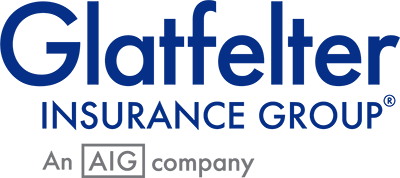Take some time for yourself
Chances are you’ve run into 2018 at 100mph with all sorts of goals in mind. Chasing goals is great, but catching those goals actually requires, at times, a slowdown. It is proven that consciously scheduling downtime moments into your day-to-day routine will offer you a plethora of benefits and help your brain operate at its optimum.
It’s generally well-known that taking breaks from grueling mental tasks can help rejuvenate the brain and reduce stress, but what other proven benefits of downtime have studies unveiled? Here are some important highlights:
- A 2011 study from the University of Illinois at Urbana-Champaign helped put a decades-old theory to rest when it proved that even brief diversions from tasks can drastically improve a person’s ability to focus on the job at hand for prolonged periods of time.
- A Harvard Business Review article discussing research led by Sophie Ellwood details a scenario where undergraduate psychology students were broken into groups to complete a common task. It was found that the group which had been given a break to work on an unrelated task during the activity was also the one that generated the most ideas.
- A Study from the University of British Columbia shows that “our brains are much more active when we daydream than previously thought. Activity in numerous brain regions increases when our minds wander, according to new research. Psychologists found that brain areas associated with complex problem-solving—previously thought to go dormant when we daydream—are in fact highly active during these episodes.”
What can you do?
-
Beware of Monotony
Tasks that are especially repetitive have a much higher chance of being tuned out by your brain. If these types of jobs are on your daily to-do list, be sure to schedule regular interruptions or “downtime” moments. Step away from your desk, read an article for pleasure, make a phone call or work on something new for a bit. -
Practice Mindful Meditation
Be conscious of your mind’s modes, and of when the brain is focused vs. daydreaming. If you find yourself losing focus, allow your brain a moment to daydream or think about other topics, and come back to the task at hand later. If you are able to clear all distractions and clear your mind through meditation, even 5 minutes of meditation will provide incredible rejuvenating benefits to the brain. -
Do some Doodling
Studies find that doodling helps your mind relax and creatively wander. If you feel mentally fatigued, pick up a pen and paper and make some magic! -
Break a Sweat
Schedule periods of exercise in the middle of your daily routines. Getting up from your desk and taking a short stroll or even doing some under-the-desk leg lifts will not only give your brain some downtime, but will also boost blood flow to the area, helping increase creative thought.
As you pursue your 2018 goals and plan your schedule for the year, remember to consciously schedule restorative quiet time. By viewing downtime as equally important to active work time, you’ll help ensure that the new year will be filled with new ideas and greater success.
Have some downtime tips or tricks that work best for you? Share them with us below!
 |
Lindsey is a proud wife and mom with a passion for culture, travel and carbs. When she isn’t planning her next Disney cruise, she’s usually chasing her dogs, hanging with her children or anxiously awaiting another date night with her husband. |

Lindsey Elias, Marketing
As our Marketing Content Manager, Lindsey is passionate about producing quality content. When not at the office or planning her next Disney getaway, she loves hanging with her husband, family and fur babies and indulging in the two c's: carbs & coffee.
DISCLAIMER
The information contained in this blog post is intended for educational purposes only and is not intended to replace expert advice in connection with the topics presented. Glatfelter specifically disclaims any liability for any act or omission by any person or entity in connection with the preparation, use or implementation of plans, principles, concepts or information contained in this publication.
Glatfelter does not make any representation or warranty, expressed or implied, with respect to the results obtained by the use, adherence or implementation of the material contained in this publication. The implementation of the plans, principles, concepts or materials contained in this publication is not a guarantee that you will achieve a certain desired result. It is strongly recommended that you consult with a professional advisor, architect or other expert prior to the implementation of plans, principles, concepts or materials contained in this publication.
This blog post may contain the content of third parties and links to third party websites. Third party content and websites are owned and operated by an independent party over which Glatfelter has no control. Glatfelter makes no representation, warranty, or guarantee as to the accuracy, completeness, timeliness or reliability of any third party content. References to third party services, processes, products, or other information does not constitute or imply any endorsement, sponsorship or recommendation by Glatfelter, unless expressly stated otherwise.
Related posts
Learn to create a memorable client experience from the customer service experts at Trader Joe's.
Questions you can use to help you determine if an insurance Carrier, Program Manager or MGA might be the right fit for your book of business.
When it comes to cybersecurity, the basics can go a long way.






Submit a Comment